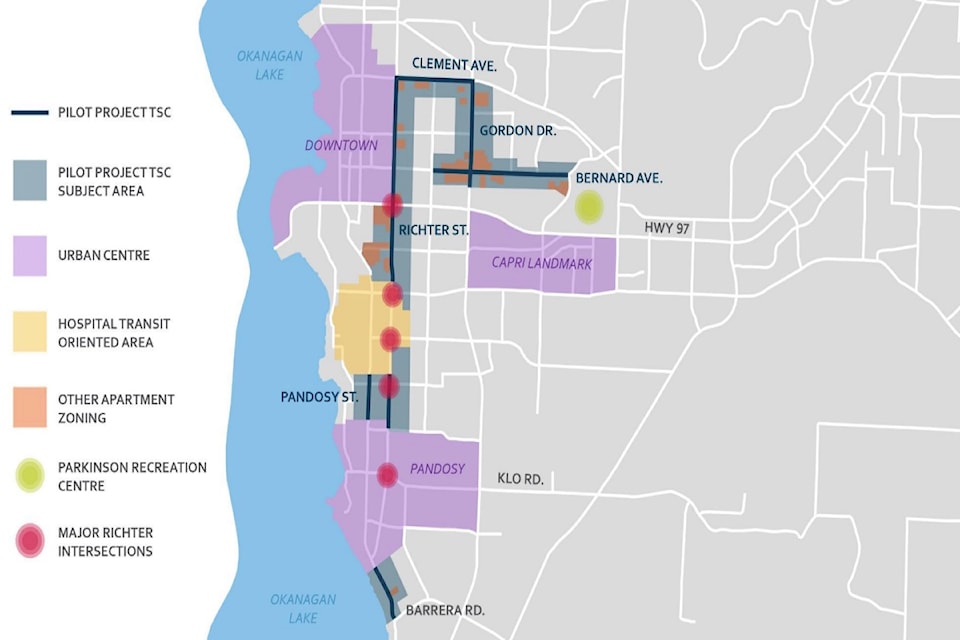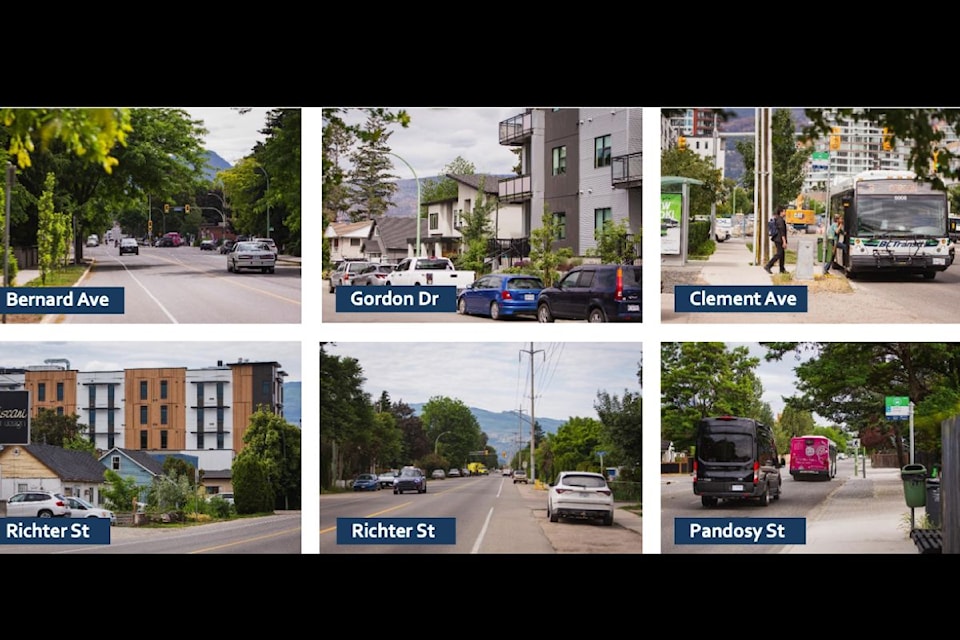Kelowna council is moving forward with a plan to bring more housing and better transit to major areas of the city, even though some councillors raised concerns about timing and infrastructure.
At its Aug. 11 meeting, council endorsed the Transit Supportive Corridor Pilot Project Draft Plan, which pre-zones certain streets to allow more housing without the need for case-by-case rezoning.
City staff say that will make it faster and more predictable for developers to build near public transit while upgrading walking, cycling, and bus infrastructure.
The work is tied to Kelowna��ѻ��ý�s $31.5-million federal Housing Accelerator Fund grant, which supports measures that boost housing supply.
��ѻ��ý�This pilot project is a way to get out in front of the bus, so to speak, so that we can actually move it along in a more planned way,��ѻ��ý� said Coun. Luke Stack. ��ѻ��ý�I like that it��ѻ��ý�s very selective.��ѻ��ý�
The current draft includes a new Transit Supportive Corridor Zone and updates to the Official Community Plan (OCP) and zoning bylaws.

Transit Supportive Corridor map / City of Kelowna
Several councillors stressed the importance of coordinating housing growth with improved transit.
��ѻ��ý�Part of the reason for the pilot project, one of the goals, is to increase transit usage, and yet we��ѻ��ý�re hearing that we��ѻ��ý�re not looking at the transit facilities being upgraded until 2032,��ѻ��ý� Coun. Rick Webber noted.
He also called for other levels of government to step up and help.
��ѻ��ý�They can��ѻ��ý�t just say we are a transit-oriented city and then��ѻ��ý�poof��ѻ��ý�we are. We need action. We can��ѻ��ý�t do it ourselves.��ѻ��ý�
Coun. Ron Cannan opposed pre-zoning at this stage, saying the city is putting ��ѻ��ý�the cart before the horse.��ѻ��ý�
��ѻ��ý�We��ѻ��ý�ve got at least five to seven years before we can get the transit confirmed,��ѻ��ý� he said. ��ѻ��ý�These developments may not take place for several years, but the land will be pre-zoned, and residents won��ѻ��ý�t have any say. It might be cheaper for the developer, but I'd rather have people over profits in that respect.��ѻ��ý�
Director of Planning and Development Ryan Smith told council that it��ѻ��ý�s unlikely that thousands of units will be built over the next few years without transit capacity.
��ѻ��ý�I think that the risk is relatively low, and there are lots of benefits in terms of coordination and planning in advance and making sure that we get the right infrastructure in place.��ѻ��ý�
Mayor Tom Dyas acknowledged the community��ѻ��ý�s long-standing concerns about transit.
��ѻ��ý�No disrespect, planning and decisions were not made years ago, and now we're sitting here at this particular point in time when we're hearing it regularly,��ѻ��ý� he added. ��ѻ��ý�I recognize that this will be a number of years before it comes about completely, but I truly believe that we're taking a strong position in advocating for it to happen.��ѻ��ý�
The first two phases of the pilot project saw council tour potential corridors and staff gather public input.
Phase 3 will see more consultation with residents and developers this fall, followed by revisions and a final plan for council��ѻ��ý�s approval.

